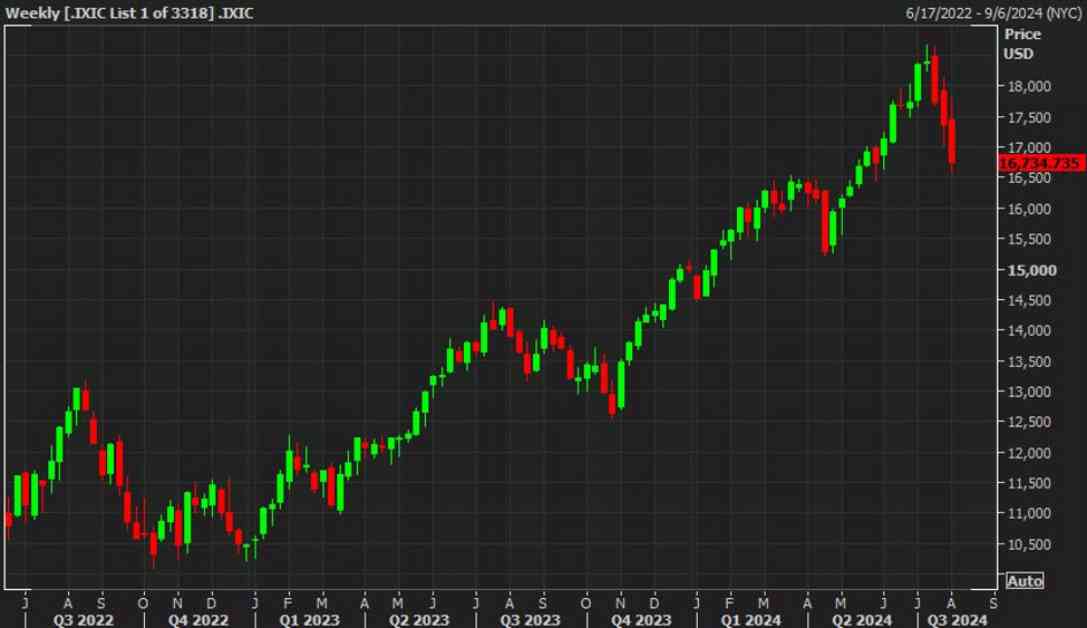The recent dip in the Nasdaq by 10.4% over the past three weeks may seem like a cause for concern, but when viewed in the broader context, it appears to be a minor correction following a strong rally. If the stock market can stabilize at its current levels, this temporary setback is likely to be forgotten. However, there are factors that could potentially lead to further selling in the market.
One significant factor is the role of artificial intelligence (AI) in driving trading decisions. A shift in the algorithms used for trading could result in significant selling pressure, particularly among the so-called “Mag 7” stocks. Additionally, there is uncertainty surrounding the Federal Reserve’s response to market expectations of a 50 basis point rate cut. It is unlikely that the Fed will easily yield to market pressure, which could lead to continued volatility in the stock market.
In the event of a further decline in the market, the relationship between the economy and the stock market becomes even more crucial. Unlike in the past, where the two were more distinct entities, they are now intricately linked in an increasingly digital and financialized economy. The strong performance of the stock market over the past 20 months has been a driving force behind US economic growth. However, a significant pullback in the market could have the opposite effect.
While a mere 10% drop in the Nasdaq may not be enough to trigger a major economic downturn, a more substantial decline, possibly exceeding 20%, coupled with job losses, could instill a recessionary mindset among investors. This could prove challenging to overcome, particularly given the current political turmoil in the United States.
It is essential for investors to closely monitor the evolving relationship between the stock market and the economy, as well as the potential impact of external factors such as AI-driven trading and Federal Reserve policies. By staying informed and prepared for various scenarios, investors can navigate the market volatility and make informed decisions to protect their investments.
















